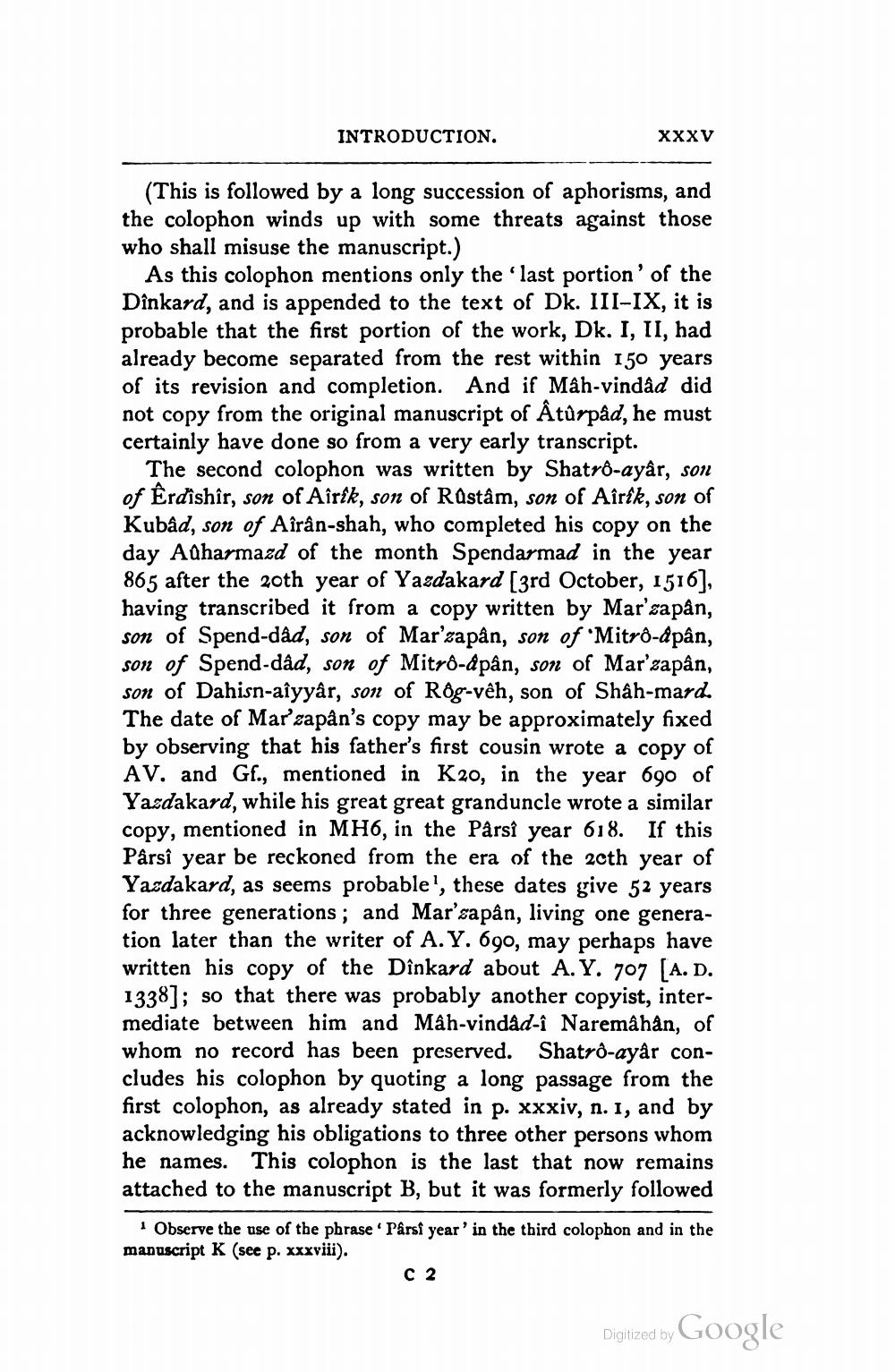________________
INTRODUCTION.
XXXV
(This is followed by a long succession of aphorisms, and the colophon winds up with some threats against those who shall misuse the manuscript.)
As this colophon mentions only the last portion of the Dînkard, and is appended to the text of Dk. III-IX, it is probable that the first portion of the work, Dk. I, II, had already become separated from the rest within 150 years of its revision and completion. And if Mâh-vindad did not copy from the original manuscript of Åtûrpåd, he must certainly have done so from a very early transcript.
The second colophon was written by Shatrô-ayâr, son of Êrdishîr, son of Aîrik, son of Rastâm, son of Aîrik, son of Kubâd, son of Aîrân-shah, who completed his copy on the day Adharmazd of the month Spendarmad in the year 865 after the 20th year of Yazdakard (3rd October, 1516], having transcribed it from a copy written by Mar' za pân, son of Spend-dâd, son of Mar'zapan, son of Mitrô-đpân, son of Spend-dâd, son of Mitrô-åpân, son of Mar’zapân, son of Dahisn-aiyyâr, son of Rôg-vêh, son of Shâh-mard. The date of Mar’zapân's copy may be approximately fixed by observing that his father's first cousin wrote a copy of AV. and Gf., mentioned in K20, in the year 690 of Yazdakard, while his great great granduncle wrote a similar copy, mentioned in MH6, in the Pârsî year 618. If this Pârsî year be reckoned from the era of the 2cth year of Yazdakard, as seems probable', these dates give 52 years for three generations; and Mar'sapân, living one generation later than the writer of A. Y. 690, may perhaps have written his copy of the Dînkard about A.Y. 707 [A. D. 1338]; so that there was probably another copyist, intermediate between him and Mâh-vindad-i Naremahan, of whom no record has been preserved. Shatrô-ayar concludes his colophon by quoting a long passage from the first colophon, as already stated in p. xxxiv, n. 1, and by acknowledging his obligations to three other persons whom he names. This colophon is the last that now remains attached to the manuscript B, but it was formerly followed
Observe the use of the phrase ' Pârst year' in the third colophon and in the manuscript K (see p. xxxviii).
C 2
Digitized by Google




